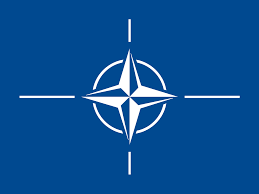
The United States Army is advancing its modernization agenda with a planned demonstration in 2026 for a new class of ‘ultra long-range’ Launched Effects (LE). This initiative represents a significant step in the evolution of unmanned systems, aiming to provide Army formations with unprecedented reach for sensing, targeting, and electronic warfare in highly contested environments. Launched Effects are a category of unmanned aerial systems (UAS) designed to be deployed from larger platforms, such as helicopters or ground vehicles, to operate as an extension of the crew’s capabilities. By pushing the operational radius of these systems into the ‘ultra long-range’ category, the Army is directly addressing the strategic challenges posed by the vast distances of the Indo-Pacific theater and the sophisticated Anti-Access/Area Denial (A2/AD) networks of peer adversaries.
This upcoming demonstration is not merely a technical exercise; it is a critical component of the Army’s overarching operational concept, Multi-Domain Operations (MDO). The core tenet of MDO is the synchronized application of capabilities across all domains—air, land, sea, space, and cyberspace—to overwhelm an adversary. Ultra long-range LEs are envisioned as a key enabler for this concept, providing persistent, survivable, and cost-effective assets that can penetrate deep into enemy territory to unmask enemy positions for the Army’s Long-Range Precision Fires (LRPF) ecosystem, another of its top modernization priorities. The 2026 event will serve as a crucial waypoint to validate emerging technologies and inform future procurement decisions for this transformative capability.
From Tactical Enabler to Strategic Asset
The concept of Launched Effects has its roots in the Army’s Future Vertical Lift (FVL) program, where they were initially conceived as ‘Air-Launched Effects’ (ALE) to support future rotorcraft. The primary goal was to deploy smaller drones from helicopters to act as scouts, decoys, or jammers, allowing the expensive manned platforms to remain outside the lethal range of enemy air defenses. This initial vision focused on short- and medium-range systems designed for a more conventional European battlefield. However, the Department of Defense’s strategic pivot to the Indo-Pacific has fundamentally altered the scale and scope of capability requirements.
The planned 2026 demonstration signals a deliberate expansion of this vision. An ‘ultra long-range’ capability implies systems that can travel hundreds of miles, far exceeding the range of current ALE prototypes. This evolution reflects a broader understanding that in a conflict with a peer competitor like China, the Army will need to project power and influence over immense geographical areas. These systems are therefore evolving from tactical enablers designed to protect a single aircraft into strategic assets capable of shaping the deep battlefield and contributing to the joint force’s overall situational awareness and targeting cycle.
Strategic Implications for the Future Battlefield
The fielding of ultra long-range LEs would have profound implications for U.S. Army doctrine and its role within the joint force. These systems are central to solving the ‘sensor-to-shooter’ challenge in an A2/AD environment. By deploying swarms of attritable, long-endurance LEs, the Army can create a resilient and distributed sensor network deep within enemy territory. This network can identify and track high-value targets, such as mobile missile launchers and command-and-control nodes, and provide real-time targeting data to long-range shooters like the Precision Strike Missile (PrSM) or hypersonic weapons.
Furthermore, these effects introduce significant dilemmas for an adversary. A large number of low-cost, autonomous systems complicates an enemy’s air defense problem, potentially saturating their integrated air defense systems (IADS) and creating corridors for friendly forces. In the context of the Joint All-Domain Command and Control (JADC2) framework, data from an Army-launched LE could be seamlessly passed to a Navy destroyer or an Air Force bomber, enabling a truly integrated and multi-domain engagement. This capability would solidify the Army’s relevance in maritime-centric theaters and enhance the entire joint force’s lethality and survivability.
Key Actors and the Path Forward
The drive for ultra long-range LEs is being led by the Army’s Program Executive Office (PEO) for Aviation, in close coordination with the Army Futures Command. The 2026 demonstration is designed as a competitive event, inviting multiple ‘contenders’ from the defense industrial base to showcase their solutions. This approach is intended to foster innovation, drive down costs, and mitigate the risk of relying on a single vendor. Major defense primes with extensive experience in UAS and missile technology, such as Lockheed Martin, Northrop Grumman, Raytheon (RTX), and General Atomics, are expected to be key participants, alongside a growing ecosystem of smaller, more agile companies specializing in autonomy, artificial intelligence, and advanced manufacturing.
Looking ahead, a successful demonstration in 2026 would likely pave the way for a formal Program of Record. However, significant challenges remain. Technical hurdles include developing reliable autonomous behaviors for operations in GPS-denied environments, ensuring secure and resilient communications over long distances, and perfecting the launch and recovery mechanisms from various platforms. Moreover, the program will face intense budgetary scrutiny and must compete for funding against other high-priority modernization efforts. Finally, ensuring seamless integration and deconfliction with similar unmanned programs in the Air Force, such as the Collaborative Combat Aircraft (CCA), will be essential for realizing the full potential of these systems within a joint operational framework.
Conclusion
The U.S. Army’s plan for a 2026 demonstration of ultra long-range Launched Effects is a clear indicator of its commitment to adapting for future high-intensity conflict. These systems promise to extend the reach and lethality of Army formations, providing a critical advantage in sensing, targeting, and survivability. While the path to fielding this capability is fraught with technical, budgetary, and integration challenges, the strategic imperative is clear. The outcome of this initiative will not only shape the future of Army aviation and long-range fires but will also be a determining factor in the U.S. military’s ability to deter and, if necessary, prevail against peer adversaries in the decades to come.
Source


